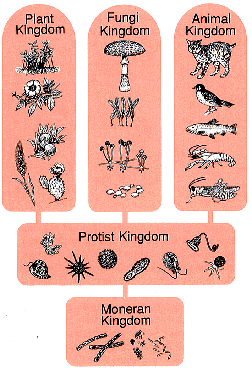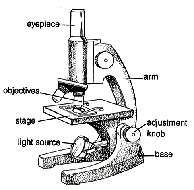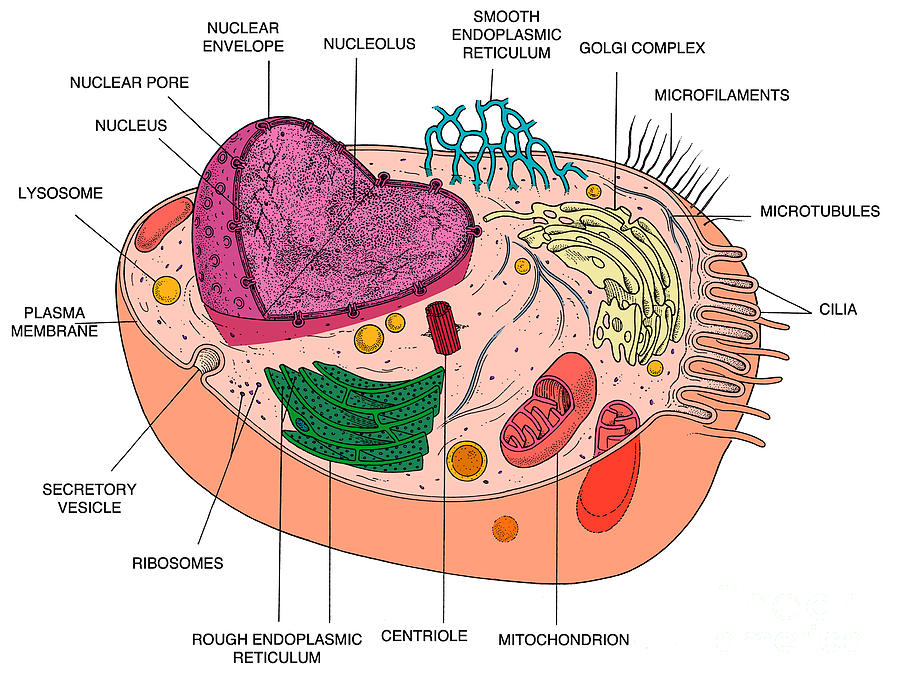
Grade 5 | Lesson 2
Dean of Students: dean@theschools.com
Tech Services: tech@theschools.com

Grade 5 | Lesson 2
Dean of Students: dean@theschools.com
Tech Services: tech@theschools.com
Science
Lesson Overview
Life Science
• Classifying Living Things
• Cells: The Building Blocks of Living Things
![]()
Life Science
In this lesson we'll first continue with our study of classification.
Classifying Living Things
We classify natural things for the same reasons we classify fruit and tables- for convenience in finding and talking about them. There are several features that scientists use to help them classify natural things. Do you remember the main differences between plants and animals? Plants usually make their own food from sunlight, water, and air, while animals usually don’t. And animals can usually move themselves around, while plants can’t. Based on features like these, scientist have classified living things into groups, called kingdoms.
People first classified things that were easy to see. So the first two kingdoms that scientists settled on were the plant and animal kingdoms. Within these large kingdoms we can classify things into smaller groups. For instance, we put all flowering plants in one large class, and all nonflowering plants into another. And we put all animals that have hair and give milk into one class, and all animals that have feathers and beaks into another.
Once the microscope was invented - which allowed us to see more creatures - the classifier’s job became more difficult. Scientists discovered many new organisms that seemed to be neither plants nor animals, and needed new classifications. Their observations led to the naming of three new kingdoms: the fungi (FUN-jie), protist (PRO-tist), and moneran (muh-NER-uhn) kingdoms. To see why scientists thought these microscopic organisms couldn’t be classified as plants or animals, we need to learn about cells. Microscopes use lenses to make
objects look larger. Unless you have
a specialized need, you would probably
use a simple microscope like the one
pictured here.

Cells: The Building Blocks of Living Things
Cells, are the tiny building blocks of living things. Most cells are so small we can see them only with a microscope. Cells were discovered over 300 years ago when an English scientist named Robert Hooke was looking through his microscope at thin slices of cork - the material, made from the bark of the cork tree, that is used to seal bottles. When Hooke looked at cork bark under the microscope, he noticed a regular pattern of small, boxlike squares in the cork, which reminded him of little rooms. He named these "cells," after the Latin word for room, cella. Later, when microscopes were further developed, scientists could study the insides of cells and see different structures. Let’s look at a picture of a cell and its parts and learn what each part does.

The cell membrane is a thin covering around the cell that separates it from its surroundings. The cell membrane helps give the cell its shape, and controls what goes into it (food, water, and oxygen) and out of it (waste). Inside the cell is the cytoplasm (SY-toe-plaz-um), a jellylike liquid in which all the other cell parts are embedded. Inside the cytoplasm is the nucleus (NOO-klee-us), the cell’s control center. The nucleus is surrounded by the nuclear membrane, which controls what goes into and comes out of the nucleus. The nucleus contains all the instructions for running the cell. To reproduce, a cell splits into two cells. But before the cell splits, the nucleus doubles itself and then divides in half so that each new cell has a copy of the cell’s instructions.
Also inside the cytoplasm are vacuoles (VAK-you-ohlz), tiny oval structures that store food, water, or wastes, and mitochondria (my-toh-KAHN-dree-uh), small structures shaped like kidney beans. Mitochondria are parts of the cell that help change food into energy the cell can use to do its work. The cells in both plants and animals, though they may differ in shape and size, have the features you’ve been reading about: the cell membrane, cytoplasm, nucleus, nuclear membrane, vacuoles, and mitochondria. Now you know what your cells have in common with the cells in a blade of grass!
Research It!
How do you know whether something is alive?
It's easy to tell a rock from an elephant, but what
about clouds, fire, a tiny virus. Science has
discovered six things that all living things do.
How many can you think of?
How many can you find on the internet?
Also, what are six things common to all living things that are not common to nonliving things.